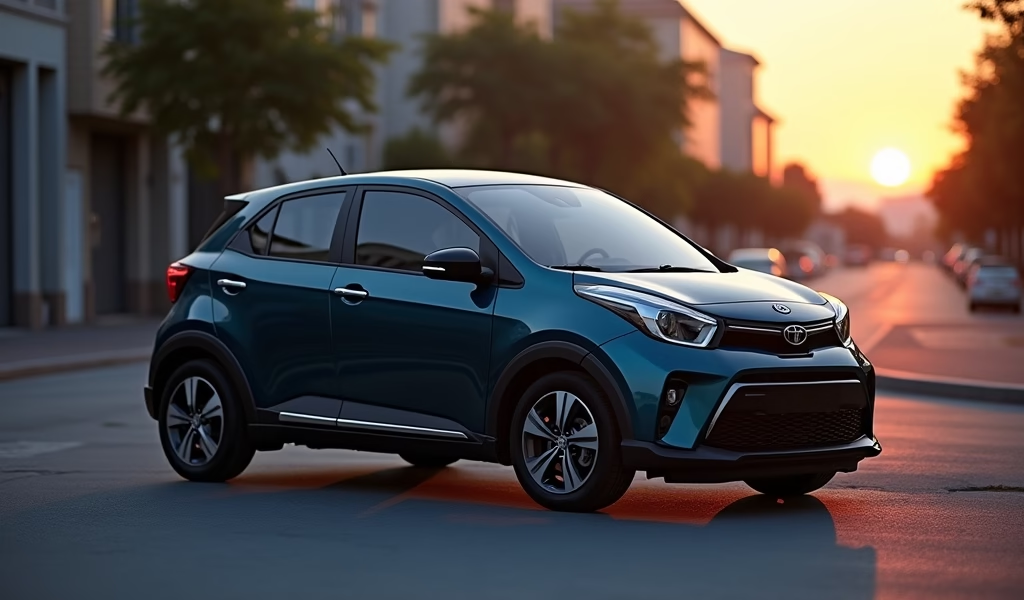Overview
This article presents five key strategies for reducing teen car insurance costs: leveraging good student discounts, using usage-based insurance programs, choosing insurance-friendly vehicles, adding teens to parents’ policies instead of purchasing separate coverage, and investing in defensive driving courses. The tips aim to help families balance affordable protection with adequate coverage while teaching teens about the financial responsibilities of driving.
Table of Contents
- Understanding Teen Car Insurance: Why It’s Different
- Factors Affecting Insurance Rates for Teen Drivers
- Tip 1: Leverage Good Student Discounts
- Tip 2: Consider Usage-Based Insurance Programs
- Tip 3: Choose the Right Vehicle
- Tip 4: Add Teens to Parents’ Policies
- Tip 5: Invest in Defensive Driving Courses
- Conclusion: Balancing Cost and Coverage
- Frequently Asked Questions
Finding the best car insurance for teens can feel like navigating a complex maze. As someone who’s spent years in the automotive industry, I’ve seen firsthand how the right insurance coverage can make a world of difference for young drivers and their families. Insurance for teenagers isn’t just about meeting legal requirements—it’s about creating a safety net during those critical early driving years.
Teen drivers represent one of the highest-risk groups on the road, which directly impacts their insurance premiums. According to the Centers for Disease Control and Prevention, the crash risk for teen drivers is nearly three times higher than for drivers aged 20 and older. This sobering statistic explains why insurance for teenage drivers typically comes with hefty price tags.
But don’t worry—I’m going to walk you through five professional tips that can help you find affordable coverage without compromising on protection. With a bit of knowledge and strategy, you can secure the best car insurance for teens while keeping your budget intact.
Understanding Teen Car Insurance: Why It’s Different
Before diving into money-saving strategies, let’s understand why teen insurance works differently. Insurance companies base their rates on risk assessment, and unfortunately, statistics don’t favor young drivers. Teens lack experience behind the wheel and are more likely to engage in risky driving behaviors such as texting while driving, speeding, or driving with multiple passengers.
The insurance industry isn’t being unfair—they’re responding to real data. A study from the Insurance Institute for Highway Safety shows that drivers aged 16-19 are nearly three times more likely to be involved in fatal crashes than drivers over 20. These numbers translate directly to higher premiums.
Additionally, teens haven’t had time to build up good driving records or credit histories, two factors that typically help lower insurance rates for older drivers. This combination of high risk and limited history creates the perfect storm for expensive insurance quotes.
Factors Affecting Insurance Rates for Teen Drivers
Several key factors influence how much you’ll pay for teen car insurance. Understanding these can help you make informed decisions:
- Age and gender: Younger teens (16-17) typically pay more than older teens (18-19). Males generally face higher rates than females due to statistical risk differences.
- Driving record: Even a single ticket or minor accident can significantly increase already high teen rates.
- Vehicle type: Sports cars and newer, expensive vehicles cost more to insure than modest, safety-focused models.
- Geographic location: Urban areas with higher traffic density and accident rates typically mean higher premiums than rural locations.
- Credit history: In many states, credit scores affect insurance rates, though this applies more to parents than teens themselves.
- Coverage levels: Minimum liability coverage costs less but offers limited protection, while comprehensive coverage provides better security at higher costs.
Now that we understand the landscape, let’s explore five professional tips to help secure the best car insurance for teens without breaking the bank.

Tip 1: Leverage Good Student Discounts
One of the most valuable and accessible discounts for teen drivers is the good student discount. Insurance companies have found a strong correlation between academic performance and responsible driving behavior. Students who maintain good grades typically exhibit better judgment behind the wheel.
Most major insurance providers offer discounts ranging from 10% to 25% for students who maintain a B average (3.0 GPA) or higher. This discount applies to high school and college students up to age 25 in most cases. To qualify, you’ll need to provide proof of academic achievement, usually in the form of a recent report card, transcript, or a letter from a school administrator.
Beyond traditional grade-based discounts, some insurers offer related savings opportunities that reward educational achievement:
- Dean’s List or Honor Roll recognition
- National Merit Scholar status
- Membership in honor societies
- College alumni associations (for parents)
These discounts serve a dual purpose: they reward responsible behavior and provide tangible financial incentives for academic success. For families with teen drivers, this creates a win-win situation where educational achievement directly translates to insurance savings.
Pro tip: Don’t assume these discounts will be applied automatically. When shopping for insurance, specifically ask about all available student discounts and what documentation you’ll need to provide. Resubmit grade information after each successful semester to ensure the discount continues.
Tip 2: Consider Usage-Based Insurance Programs
Technology has revolutionized the way insurance companies assess risk, particularly for teen drivers. Usage-based insurance (UBI) programs, sometimes called telematics, use devices or smartphone apps to monitor actual driving habits rather than relying solely on demographic statistics.
These programs track factors like:
- Time of day driving occurs
- Speed and acceleration patterns
- Hard braking incidents
- Sharp turns
- Phone usage while driving
- Total miles driven
For responsible teen drivers, these programs can lead to significant discounts—sometimes up to 30% off standard premiums. The initial discount for signing up is typically around 5-10%, with the opportunity to earn larger discounts based on demonstrated safe driving habits.
Companies like Progressive (Snapshot), Allstate (Drivewise), State Farm (Drive Safe & Save), and Liberty Mutual (RightTrack) offer versions of these programs with varying features and discount potential. Each program has its own specific monitoring period and evaluation criteria.
Beyond the financial benefits, telematics programs offer valuable feedback that can help teens develop safer driving habits. Many apps provide scoring systems, driving tips, and detailed reports that highlight areas for improvement. This educational component can be particularly valuable during those crucial early driving years when habits are forming.
When considering car insurance for teenage drivers, UBI programs represent one of the few opportunities for teens to directly influence their insurance rates through their own behavior—an empowering option in a market that often feels stacked against young drivers.
Tip 3: Choose the Right Vehicle
Vehicle selection plays a crucial role in determining insurance costs for teen drivers. While your teenager might dream of a sporty convertible or powerful truck, such choices can dramatically increase insurance premiums beyond what’s already high for young drivers.
From my years advising families about automotive decisions, I’ve found that the following vehicle characteristics typically result in lower insurance rates:
- Four-door sedans or small SUVs with moderate engine power
- Vehicles with excellent safety ratings and multiple airbags
- Models equipped with advanced driver assistance systems (ADAS)
- Cars with lower repair costs and readily available parts
- Vehicles that aren’t commonly stolen
Specific models that frequently earn insurance company approval include the Honda Civic, Toyota Corolla, Mazda3, Subaru Impreza, and similar mid-sized sedans. These vehicles balance safety, reliability, and reasonable replacement costs—all factors that insurance companies consider when setting rates.
When shopping for a teen’s vehicle, I recommend checking the Insurance Institute for Highway Safety (IIHS) ratings and considering models that earn their “Top Safety Pick” or “Top Safety Pick+” designations. These vehicles have performed well in crash tests and often include crash prevention technology that can both protect your teen and lower your insurance costs.
Remember that newer isn’t always better from an insurance perspective. A new car means higher replacement value, which translates to higher premiums. A reliable used car (3-5 years old) with modern safety features often represents the sweet spot for balancing safety and insurance costs for teen drivers.

Tip 4: Add Teens to Parents’ Policies
One of the most effective strategies for securing affordable teen car insurance is adding young drivers to an existing family policy rather than purchasing a separate policy. This approach leverages several financial advantages that can lead to substantial savings.
When you add a teen to a family policy, they benefit from:
- Multi-car discounts that reduce the overall premium
- The parents’ established driving history and insurance loyalty
- Bundling discounts if the family has multiple insurance products with the same company
- Higher liability limits that might be financially out of reach on a teen-only policy
The savings can be dramatic. According to insurance industry data, adding a teen to a family policy typically increases the family’s premium by 50-100%, while a standalone policy for the same teen might cost 2-3 times more than the entire family policy before the addition.
This approach also creates teaching opportunities. Parents can set clear expectations about how driving privileges relate to insurance costs. Many families establish agreements where teens contribute to their portion of the insurance premium, helping young drivers understand the financial responsibility that comes with driving privileges.
An important note: While the teen lives at home or attends college, they can typically remain on the family policy. However, once they move out permanently or establish financial independence, insurance companies will generally require them to obtain their own policy. The transition point varies by insurer, so check your specific policy details.
For parents concerned about their own rates increasing due to potential teen accidents, consider asking about “accident forgiveness” options when adding your teen to the policy. These programs, while sometimes carrying a small additional cost, can prevent massive rate increases after a first accident.
Tip 5: Invest in Defensive Driving Courses
Defensive driving education represents one of the most valuable investments for teen drivers, offering both safety benefits and insurance savings. Unlike standard driver’s education (which is often required), advanced defensive driving courses teach specific skills for avoiding accidents and managing dangerous situations.
Most insurance companies offer discounts ranging from 5% to 15% for teens who complete approved defensive driving courses. These programs typically cover:
- Hazard recognition and avoidance techniques
- Emergency maneuver training
- Proper braking and skid control
- Maintaining safe following distances
- Managing distractions and road rage situations
- Special conditions driving (night, rain, snow, etc.)
Programs like the National Safety Council’s Defensive Driving Course, AAA’s Driver Improvement Program, and hands-on training courses offered by organizations like B.R.A.K.E.S. (Be Responsible And Keep Everyone Safe) provide recognized certifications that most insurers accept for discounts.
Beyond the immediate insurance savings, these courses deliver lasting value by reducing the likelihood of accidents, tickets, and claims—all of which would dramatically increase future insurance costs. Consider them an investment in both current savings and future rate protection.
When selecting a course, verify with your insurance provider which specific programs qualify for discounts. Some insurers maintain lists of approved courses, while others evaluate programs on a case-by-case basis. The most beneficial courses combine classroom learning with actual behind-the-wheel practice in controlled environments.
Many families find that the course fee—typically $100-$300 depending on program intensity—pays for itself within the first year through insurance discounts alone, not counting the immeasurable value of improved safety and potential accident avoidance.
Conclusion: Balancing Cost and Coverage
Navigating the world of teen car insurance requires balancing cost considerations with adequate protection. While finding the best car insurance for teens often feels like a challenging task, implementing the five tips we’ve discussed can make a significant difference in both affordability and coverage quality.
Remember that the goal isn’t simply to find the cheapest policy—it’s to secure appropriate coverage that protects your teen driver and your family’s financial well-being. The initial years of driving establish patterns that often last a lifetime, making this an ideal time to emphasize the connection between responsible behavior and financial benefits.
By leveraging good student discounts, exploring usage-based insurance, selecting appropriate vehicles, adding teens to family policies, and investing in defensive driving education, families can potentially reduce teen insurance costs by 30-50% compared to standard rates.
As you shop for coverage, get quotes from multiple providers, ask specifically about discounts for teens, and don’t hesitate to negotiate. Insurance is a competitive industry, and companies often have flexibility that isn’t immediately apparent in initial quotes.
Most importantly, use the insurance shopping process as an opportunity to educate your teen about financial responsibility and the real-world consequences of driving decisions. The lessons learned now—both about driving safety and financial management—will serve them well throughout their adult lives.
Frequently Asked Questions
At what age does car insurance get cheaper for teens?
Insurance rates typically begin decreasing at age 19, with more significant drops at 21 and 25. Each birthday through the teen years usually brings a small rate reduction if the driving record remains clean.
Do all insurance companies offer good student discounts?
Most major insurers offer good student discounts, but specific qualifications and discount percentages vary. Always ask potential insurers about their student discount programs and required documentation.
Can teens get their own car insurance policy?
Yes, teens can get their own policies, but this is almost always more expensive than joining a family policy. Independent policies typically make sense only when teens live separately from parents.
How much does adding a teenage driver increase insurance?
Adding a teen to a family policy typically increases premiums by 50-100% depending on location, vehicle, and the teen’s characteristics. This is still substantially less than a standalone policy for the teen.
Should teens have liability-only or full coverage insurance?
The appropriate coverage depends on the vehicle’s value and your financial situation. For newer or financed vehicles, comprehensive coverage is generally recommended despite higher costs.


Pingback: Best Auto Insurance for Teens: Save Big! - knowsyourcar.com
Pingback: Best Car Insurance for Drivers Under 25 - knowsyourcar.com